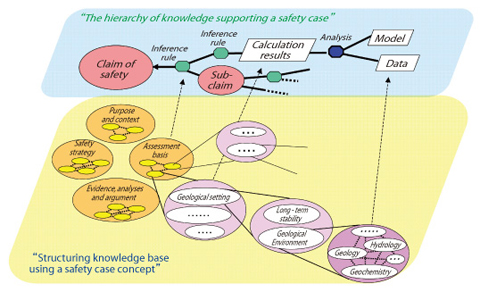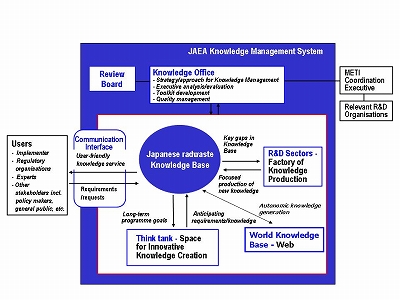
Fig.2-3 An approach to structuring knowledge based on its application to support a safety case

Fig.2-4 Preliminary KMS concept 2)
The implementation process for the geological disposal of high-level radioactive waste (HLW) utilizes vast quantities of information, data, experience, understanding, etc. -which can be defined broadly as "knowledge". All stakeholders, including the implementer, the regulator and political decision-makers, will use this knowledge at many decision points in the phased implementation process. In order to improve confidence in the safety of geological disposal, it is necessary to collate, integrate and quality assure appropriate knowledge, extending it where needed with focused studies -taking particular account of advances in the diverse areas of science and technology that are of relevance here.
The exponential expansion of knowledge is, however, rapidly reaching the limits of what can be handled by traditional approaches. we, therefore, have initiated a project to develop a "next generation" knowledge management system (KMS), utilizing advanced electronic information management technology.2) Although extremely challenging and requiring development of novel technology, this seems essential to prepare for repositories which will be licensed in the 21st century.
Initially, the prototype knowledge base will follow the structure of a geological repository safety case, which will certainly be a key requirement for all implementers and will need to be evaluated by regulators (JNC, 2005).1) Fig.2-3 illustrates an approach to structuring knowledge, using the safety case concept. The structured knowledge is further organised within an integrated knowledge base, which contains all relevant information produced or needed by users, including raw and processed data, documents, software, experience & methodology, synthesis output, guidance and materials for presentations.2)
The preliminary concept for a Japanese KMS is shown in Fig.2-4. Although such a system is still at the early stages of internal discussion, it can be seen that the emphasis is on interaction -with two-way flows between the knowledge base and the central guiding knowledge office, the R&D sectors which produce focused new knowledge, the web (which is the interface to the wider international community), a think tank (which attempts to anticipate relevant future developments) and, most importantly, the end-users.
Taking account of both present requirements and possible future needs of users, we will develop a prototype of a novel KMS within the current 5-year R&D programme (up to the fiscal year 2010). The quality-assured knowledge base provided by JAEA (as an independent third party) will also integrate the R&D results from other organizations and can thus serve as a valuable technical resource for both the implementer and the regulator, allowing JAEA to play a central R&D role in the HLW disposal programme in Japan.
Although this work is focused on radioactive waste disposal, knowledge management will be one of the great challenges of coming decades and the technology developed may be transferable to many other applications.
<Previous: 2 Research and Development on Geological Disposal of High-Level Radioactive Waste | Next: 2-3 >